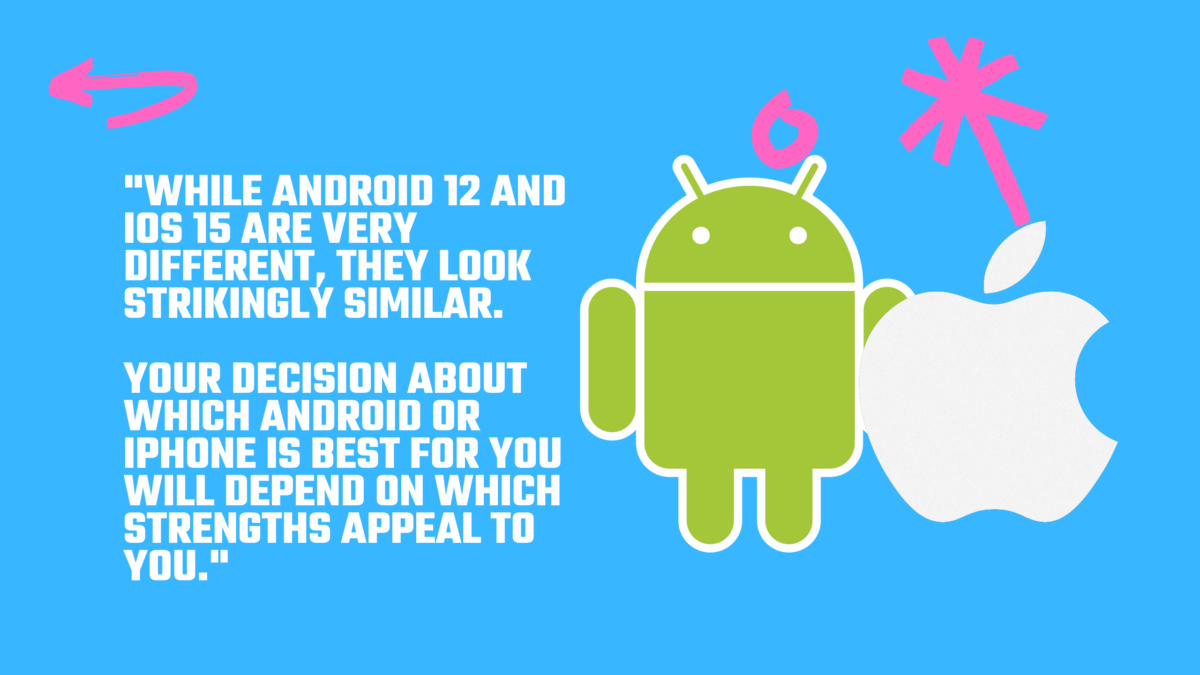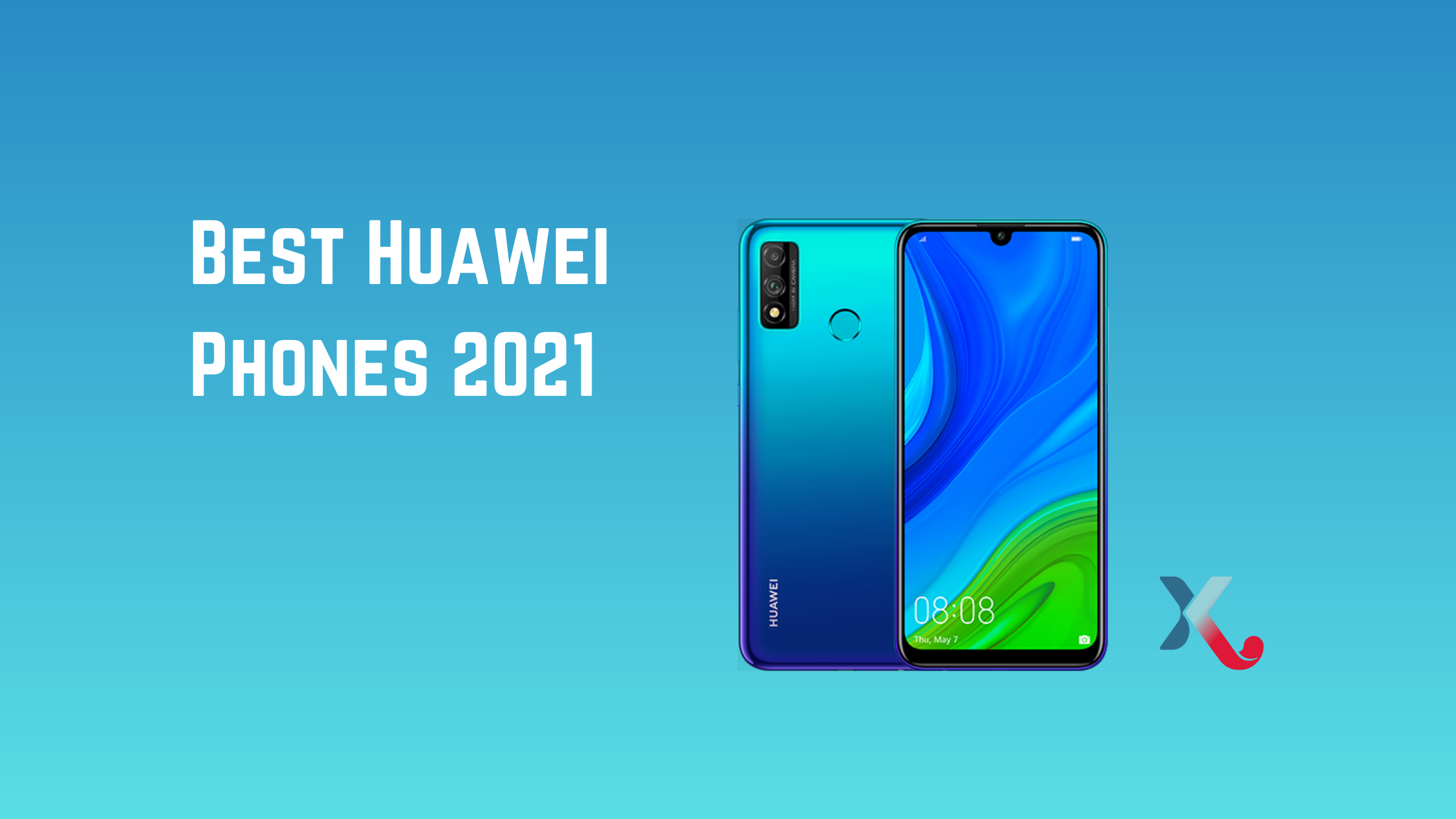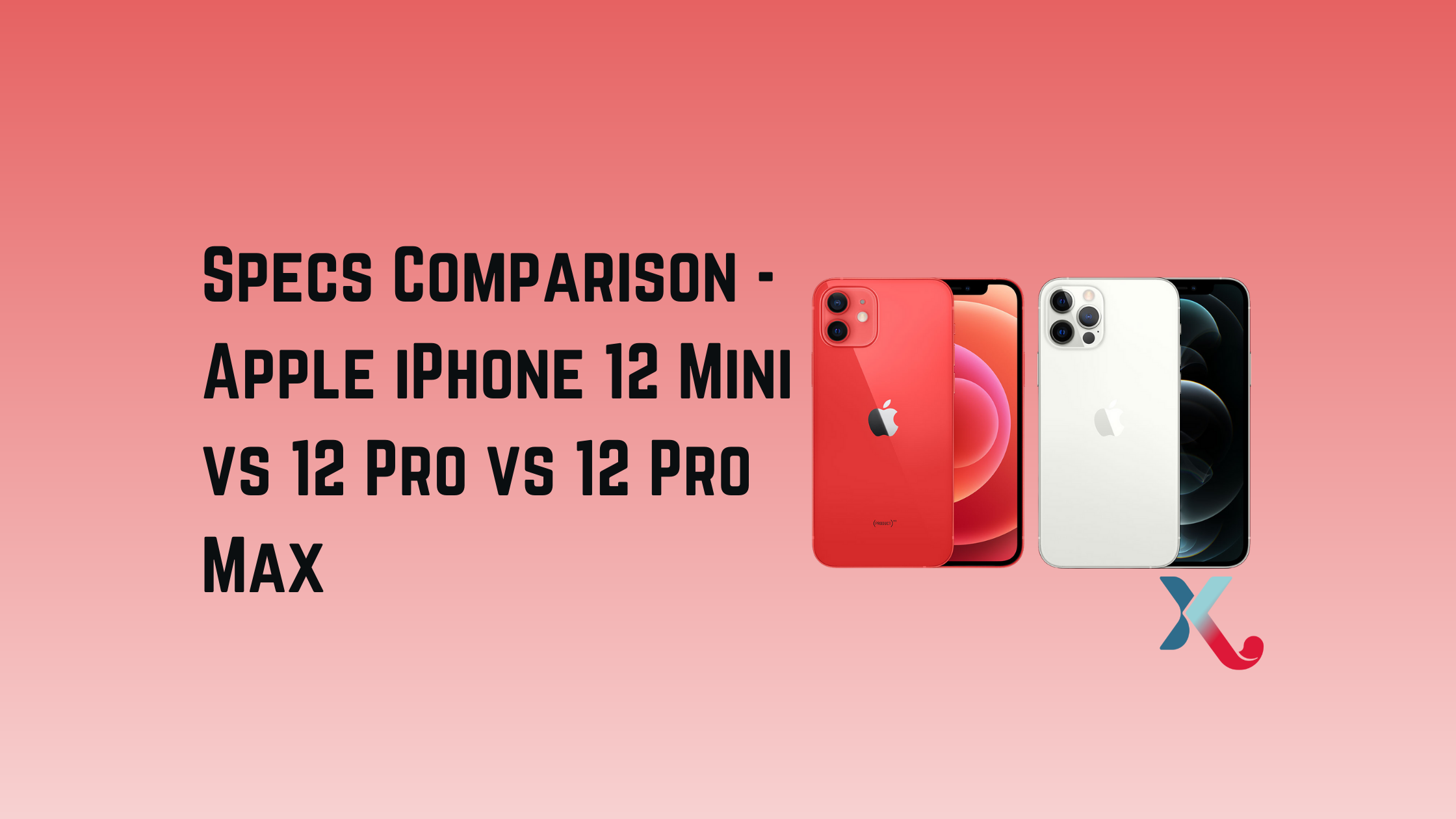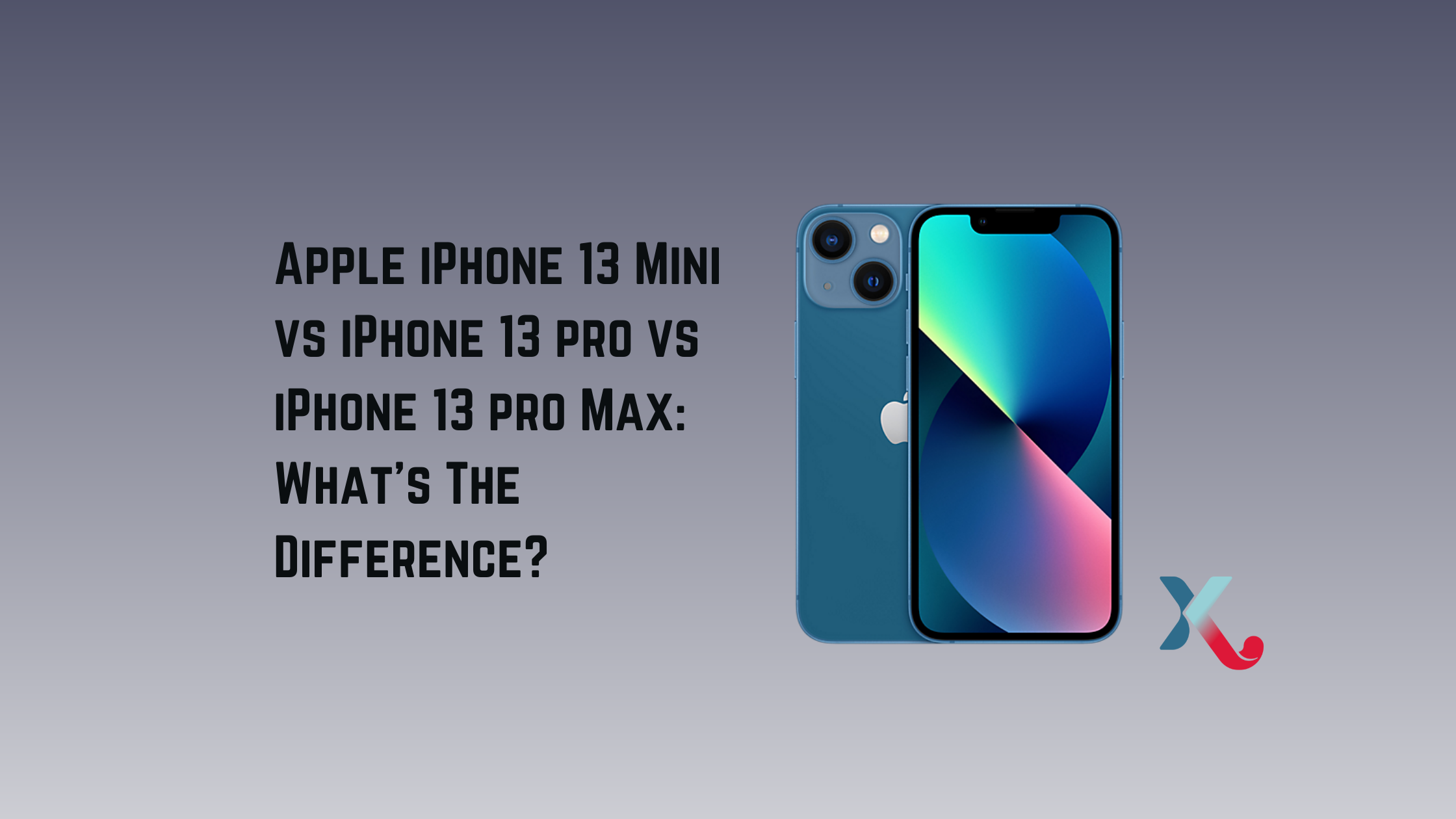As Apple and Google prepare to release iOS 15 and Android 12, respectively, the iPhone vs Android debate continues. Although you have the option to purchase the top phones from a variety of companies, you will always get one that runs one of two popular mobile operating systems: iOS (if your iPhone is selected) or Android (if anything else).
Both platforms have been around for over a decade and are very mature. Both platforms have extensive feature sets and can do almost everything the other cannot. Each has its benefits so that you may choose one.
We compare iPhone and Android to help you choose the best mobile platform for you next time you purchase a smartphone.
The big news is, of course, the new iOS 15 and Android 12 releases. Both iOS 15 and Android 12 are coming soon. We have been playing around with them for some time, and you can check out our hands-on iOS 15 and Android 12. We also took a superficial look at which OS is the most impressive this year.
iPhone vs Android: Why iPhone has the edge
You are invested in Apple’s ecosystem. Although this may seem like an insignificant reason, Apple makes many tech products. If you already have a Mac, iPad, or Apple Watch, buying an iPhone is a great idea.
Apple offers a variety of continuity features that enable you to transfer work and data between your devices. These features can save you a lot of time. For example, Handoff allows calls to be transferred seamlessly between iOS devices and macOS. Universal Clipboard allows text to be copied from one platform to the other. Another favourite is Continuity Camera. This will enable you to take photos and scan documents with your iPhone’s camera. Then, you can view and edit the images on your Mac. Apple Pay allows you to make purchases directly from your Mac using biometric authentication.
Only a few Android phone manufacturers have hardware ecosystems comparable to Apple’s. Even those that are close, such as Samsung, you won’t be able to get the same level of integration between your iPhone and other Apple-built phones. Microsoft is helping Google to close the gap with its new Your Phone app. This allows Android users to reply to texts and other notifications on their Windows PCs. However, the experience is somewhat clunky, and there is still much to do.
There are many great examples of continuity between iOS, iPadOS and macOS. The iPhone is an important piece in this puzzle, especially since iPhone apps can seamlessly be ported to macOS. An iPhone can be a great addition to the Apple ecosystem for those already plugged in to it. Friends and family who use FaceTime and iMessage to stay in touch are also eligible.
Third-party apps are better. This is a personal choice. However, as someone who has used both iOS and Android for as long as they have been around, I am consistently impressed by iOS apps’ quality while being disappointed by their Android counterparts.
I don’t mean to be negative, there are great developers and software on Android. However, they’re more difficult to find. Tweetbot 5, one of our favourite Twitter apps, is exclusive to iOS. Fenix 2, a third-party Twitter app, is a far superior choice. Henry T. Casey (one of our staff) loves Bear for writing blog posts on his iPhone and Mac. However, we have yet to find an Android note-taking app that is as thorough and user-friendly. But, Android has a markdown editor that I prefer over iOS.
Apps from well-known companies such as banks and airlines may be easier to use on iOS than Android. They also integrate better with core services like Wallet. Google Pay is just now being accepted by many airlines. Snapchat on Android is slow and unstable, not to mention the poor quality of its app.
You will find a more comprehensive selection of accessories. You’ll find more accessories at Target and Best Buy than you will any other company. After you get past the limited selection of accessories for the Galaxy S, you will be out of luck.
There are many options for iPhone cases, screen protectors and car mounts. This is more than any other phone.
App tracking notifications have enhanced privacy controls. App tracking notifications were introduced in the most recent iOS release. This allows you to opt-out of apps tracking your phone across all of its applications. This was a significant win for privacy advocates and a blow to many third-party companies like Facebook.
This feature is not available on Android and we don’t think it will ever be. It would be best if you didn’t believe that iOS is more private than Android. While Apple still collects tons of information about you, iOS has more protection for third parties. It is so satisfying to deny apps the ability to track your movements.
Bloatware is not allowed. No matter where your iPhone is purchased, what iPhone model you choose, there won’t be any preinstalled bloatware when it boots up for the first time. It’s spotless, from the beginning. There are no data-siphoning or power-siphoning applications that could be sabotaging the system behind the scenes.
Android users who buy one without a service contract will have better success avoiding bloatware. It all depends on the company. Unlocked Pixel phones don’t get hampered by third-party apps. However, it is not uncommon for unlocked Pixel phones to be loaded with unwelcome sponsored software.
You get quicker software updates. Android phones receive fewer updates than iPhones. They also get them less often and more frequently, which can lead to delays.
An Android phone’s lifetime number of updates will depend on its price, the carrier it was purchased from (or whether it was ever bought from any page) and the software support policy of the manufacturer.
This is a far cry from iPhones which receive major software updates for many, many years. For example, the iPhone 6S received iOS 14 even though it was initially released with iOS 9 in 2015. Consider the Samsung Galaxy S6, which was launched in 2015 and came with Android 5.0 Lollipop. It does not have the most recent Android software and it has stopped receiving updates for years. It was only able to get to 7.0 Nougat after Samsung cut off support. The S6 received Nougat in March 2017, eighteen months after Google announced the update.
A new iOS version can be downloaded instantly on any model that supports it. Android updates are distributed in waves to individual phones and not by model.
It offers better support at the retail level. Let’s suppose that something goes wrong with your iPhone and you need it to be serviced. You might want to install a screen protector on your iPhone, but you prefer to have it done by professionals who will apply the film with no bubbles or dust. No matter what your problem may be, it is nice to have somewhere to go. The Apple Store is the perfect place for iPhone users. Although Covid restrictions may make it difficult, at least you have the option.
Android phone owners don’t have that luxury. If your phone needs a replacement screen or battery, and you did not purchase a protection plan at the retailer where it was purchased, you will have to send it back to the manufacturer. This can be a tedious task considering how dependent we are on our phones every day.
iPhone vs Android: Why Android Is Better
There are phones for every price range. Android is the operating system of most smartphones worldwide. Because so many companies make Android handsets, there are phones at all price points. There are many Android devices that can be found for any budget, regardless of how much money you have.
This is not true for iPhones. They have historically been very expensive at launch but have come down in price over time.
It is more customisable. Both Android and iOS have changed over time, but Android has always been known for being the platform that allows users to customize their devices and tinker with them. The home screen launcher offers dynamic widgets, the ability to place apps anywhere you like on a page, or in a drawer out of sight. This is something that the iPhone is just now catching up to with iOS 14. You can also swap your Android phone’s home screen launcher for one from the Google Play Store.
Android allows you to download third-party alternatives for core services, such as web browsers and keyboards. You can also set them up as default versions if an app you like better than one you have preinstalled. Although iOS has made some improvements over time, the implementation is still a bit clunky.
We must also mention manufacturer skins, which are customised user interfaces and Android software by specific phone manufacturers. These can be customized to offer additional features and the ability to create themes to enhance your experience. Some Android users prefer Google’s “stock Android” version. Many users prefer custom software from phone manufacturers, such as Samsung’s One UI and OnePlus’ OxygenOS. This is because they have additional capabilities like the ability to take scrolling photos and hide videos and pictures in password-protected files.
Google is making a change with Android 12, which introduces the Material You design language. This new direction expands upon the look and feels of Android over the years, offering greater personalization. A pseudo-theming system adapts to your wallpapers and applies the same shade system-wide. It remains to be seen how Samsung and OnePlus modify things in their skins.
Sometimes, you can expand your storage. Even though expandable storage has become less common, many Android phones still offer it. You can use this card to store photos, apps, and other media that doesn’t fit in your internal memory.
This is a huge benefit considering the high prices Apple and other phone manufacturers charge to double, quadruple or quadruple your storage.
It’s becoming less common on higher-end phones, but many Android phones still have headphone jacks, a feature Apple removed from its phones in 2016. This is a huge deal for people who still enjoy their old wired headphones.
USB-C is universal. Android phones are largely powered by USB-C ports these days for data transfer and charging. This is great if you like to travel light and have only one cable. USB-C can be found on many computers these days as well as the Nintendo Switch.
While Apple’s Lightning cable may be a remnant of the days when every tech company felt the need to create its own connector, USB-C is the perfect single-port solution that the industry is striving for. It opens the door to faster charging technologies.
For example, the OnePlus 9 Pro can charge a battery from zero to 61 per cent in just 15 minutes. After waiting for 30 minutes, your battery will be 99 percent charged.
This compares to the iPhone 12, which keeps Lightning. Apple also no longer includes a charger with the box.
You can drag-and-drop your files onto a file system. The majority of people don’t have to be involved with the file system on their smartphone. It’s nice to know that Android allows you to do this if you wish. You can drag and drop files from an Android phone into folders by plugging it into a Windows PC.
This means that your media libraries and documents can be easily transferred and stored locally. If you have a large library, you don’t need to sign up for a monthly cloud service. iPhones hide the file system of all files except photos. This can make it difficult to access music, documents, and other media.
Samsung’s Galaxy Note 20 has a special display projection feature that allows you to view your Android phone in a desktop mode. Samsung’s DeX interface, for example, is an example. This versatility makes it possible for a high-end Android phone to replace a Chromebook or similar ultraportable laptop.
Android phones are often the first to get new features. Apple has a lot of money. It is only one company with one philosophy. iOS may not be able to keep up with the Android community’s pace of change.
It’s no surprise that Android partners are more successful than Apple in the mobile market, with so many Android phone companies. Before iPhones, Android phones had wireless charging, fast charging and NFC. 5G, OLED displays and in-screen fingerprint sensors were also available. Multilens cameras, water resistance, and software innovations like multitasking, copy-paste, and true multitasking.
This is not to say that Apple hasn’t made breakthroughs. Although the iPhone X was not the first phone to use face recognition, it was the first one with reliable and secure security. There are many Android phones released every year from different vendors, so it is just a matter if the hardware running Google’s platform can be adapted faster.

iOS 15 vs. Android 12
We have big 2021 updates for both iOS and Android, which go beyond the core iOS vs. Android debate. Android 12 represents a significant design change from previous versions. It features the Material You design language, which caters to your needs with a casual theme. You’ll also find a privacy dashboard and many other features. Check out our Android 12 article.
iOS 15 brings the new Focus mode, a slight overhaul of notifications, revamps for many-core apps such as FaceTime and Wallet and a lot more that we don’t have the time to cover here. Check out our iOS 15 coverage.
These updates do not change the strengths of iOS or Android, but they strengthen them. There is a lot of overlap between them, despite the vast differences. iOS 15 notifications, for example, areas similar to Android’s as they can be. Apple is even copying the Android model. Android 12 takes privacy seriously. It has a very iOS-like camera and microphone indicators when either one or both are active. They both feature breakdowns of the apps that have been active in recent times.
While Android 12 and iOS 15 are very different, both have their core design principles intact. However, they look strikingly similar. These are the same things that I have already mentioned. Your decision about which Android or iPhone is best for you will depend on which strengths appeal to you.
Which one should you choose?
The choice between Android and iPhone is up to you. Both platforms have their pros and cons. Your choice, like many other purchase decisions, will depend on your values.
An iPhone makes life easier and more enjoyable. Apple’s iPhone is the most widely used smartphone brand, so there’s little to worry about.
Android device ownership can be a little more complicated in these respects. It’s also more flexible, as you have more options — you can choose how much you spend, which hardware and software features you use, and how you arrange and personalise your experience. Android might be more appealing to you if you are very particular about the technology that you use. However, you will likely regret the lack of high-quality accessories and apps.
No matter what device you choose, make sure it is compatible with your preferred operating system.
Trade-in your old phones with NIX and leave with a brand new phone.
Remember, the NIX magic number is zero!! How close can you get? Come in and see.
Recycle your old phone with NIX and sign-up to our Premium Membership for even better prices and saving at NIX.
MEGA TIP: NIX Premium Members can trade in multiple devices at once to really reduce the price of the new phone.


